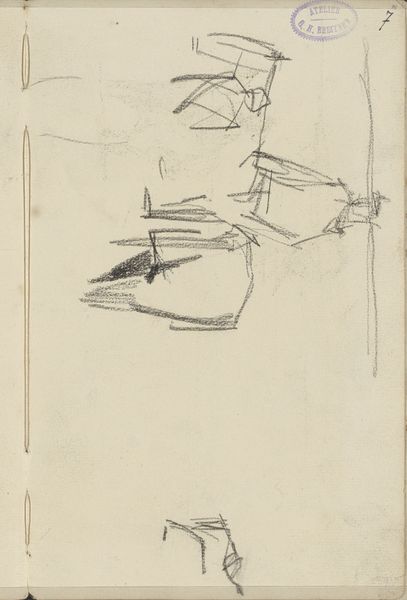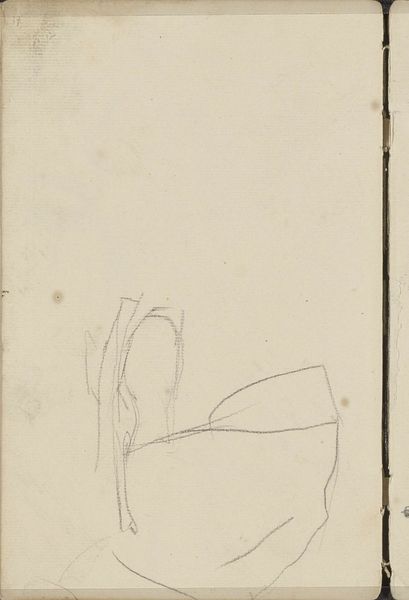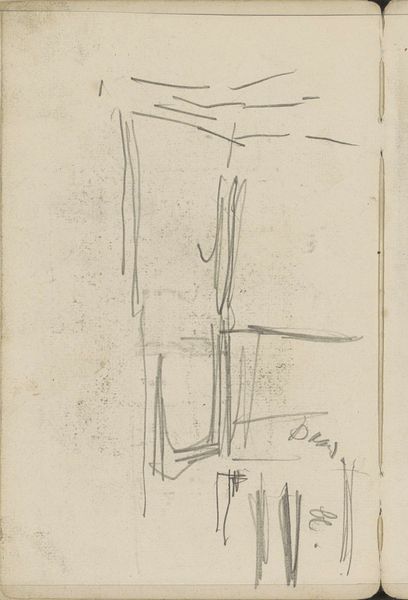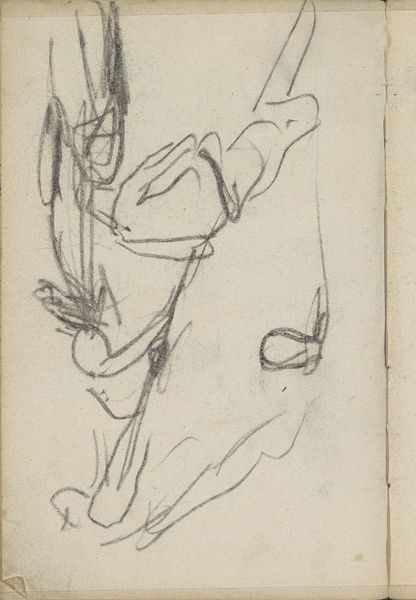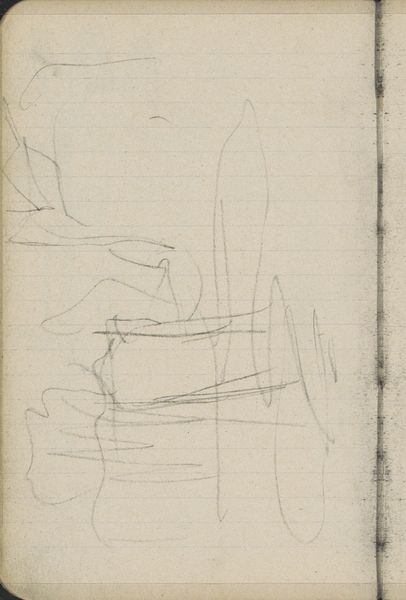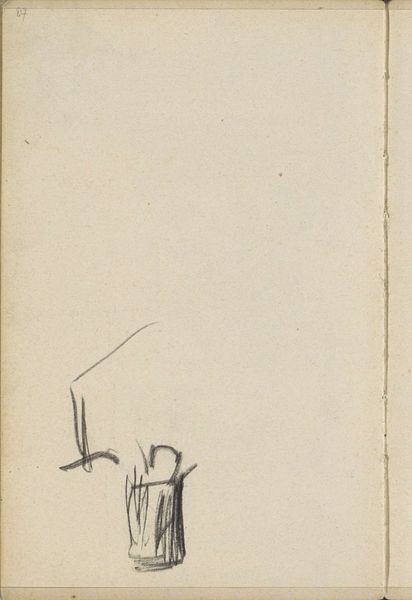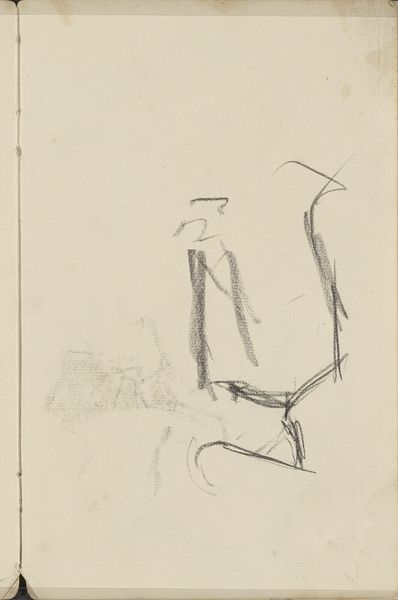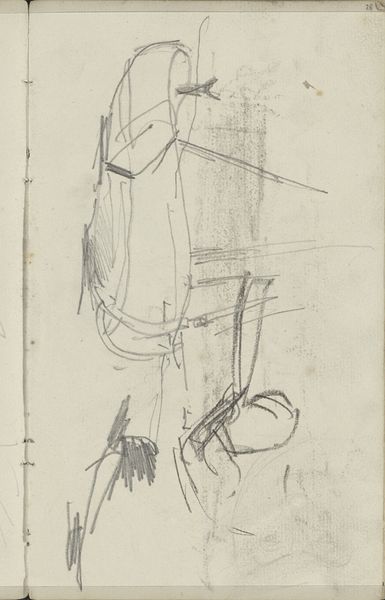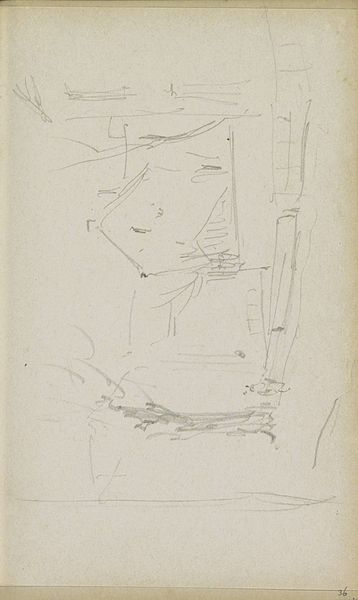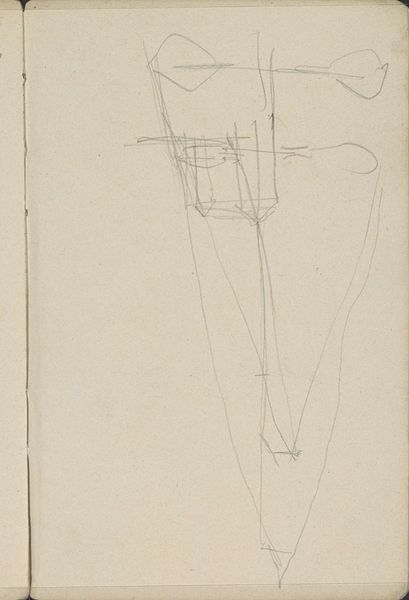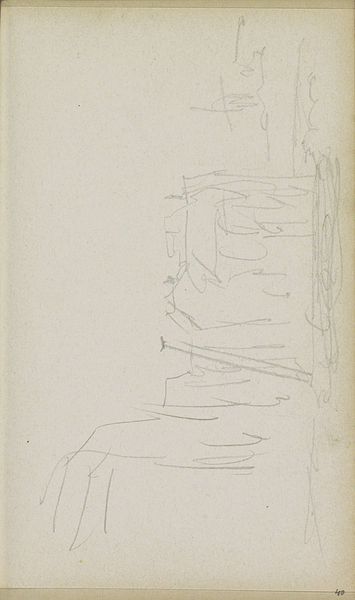
Copyright: Rijks Museum: Open Domain
Curator: This is George Hendrik Breitner's "Grondkruier," a graphite drawing from around 1900-1901, currently residing here at the Rijksmuseum. Editor: The rawness strikes me immediately. There's a frenetic energy in these graphite lines, as if Breitner captured a fleeting moment, prioritizing movement over meticulous detail. Curator: Absolutely. It reflects Impressionist principles. Think of it: Breitner's lens often captured working-class life. In that respect, what is represented transcends gender, race, or sexual orientation because of its stark portrayal of urban experience. Editor: Focusing on the “how” it’s made, the seemingly hurried marks with the graphite speak volumes about the pressures of modern labor—a constant, restless churn that mirrored the rapid industrialization around him. Curator: Consider how that material rendering reflects societal pressures; Breitner witnessed monumental shifts impacting class and identity. These hasty lines embody anxieties prevalent in Dutch society at that time. The unfinished nature might point towards transient living conditions during such periods of time. Editor: And the visible pencil strokes – they refuse any illusion of polish, reminding us that this is a process. A constructed thing, not just a window onto reality, but revealing the materials utilized in its own fabrication, thus emphasizing his physical and mental engagement. Curator: In terms of representation, that matters. Breitner deliberately presents this "grondkruier"—likely a sand barge worker or someone digging dirt—in the context of turn-of-the-century Amsterdam, reflecting how urbanization shaped lives, bodies, and, significantly, subjectivities. The image does, arguably, humanize marginalized existences—what do you see? Editor: I note the cyclical labor inherent in earth moving… almost Sisyphean in nature. The rough medium only reinforces this notion by mirroring roughness. I do think the deliberate "sketchiness" makes a specific comment, that by not illustrating a finished idealization, he is in fact grounding what he’s capturing to real terms. Curator: Exactly! He spotlights the relentless exertion characteristic of certain forms of labor—something frequently absent or idealized elsewhere during such historical moments. Editor: It also disrupts expectations of what “art” should look like, pulling focus toward something more tangible, honest even about the worker experience. It also has value intrinsically in that sense! Curator: Reflecting upon it, the drawing allows us entry not just into what somebody was illustrating but also into wider concerns relating toward gender dynamics, cultural constructions, or socio-economic hierarchies. It creates pathways, basically… Editor: To summarize, it makes art out of daily living; revealing both beauty in materiality and prompting discussions pertaining directly to culture/material!
Comments
No comments
Be the first to comment and join the conversation on the ultimate creative platform.
